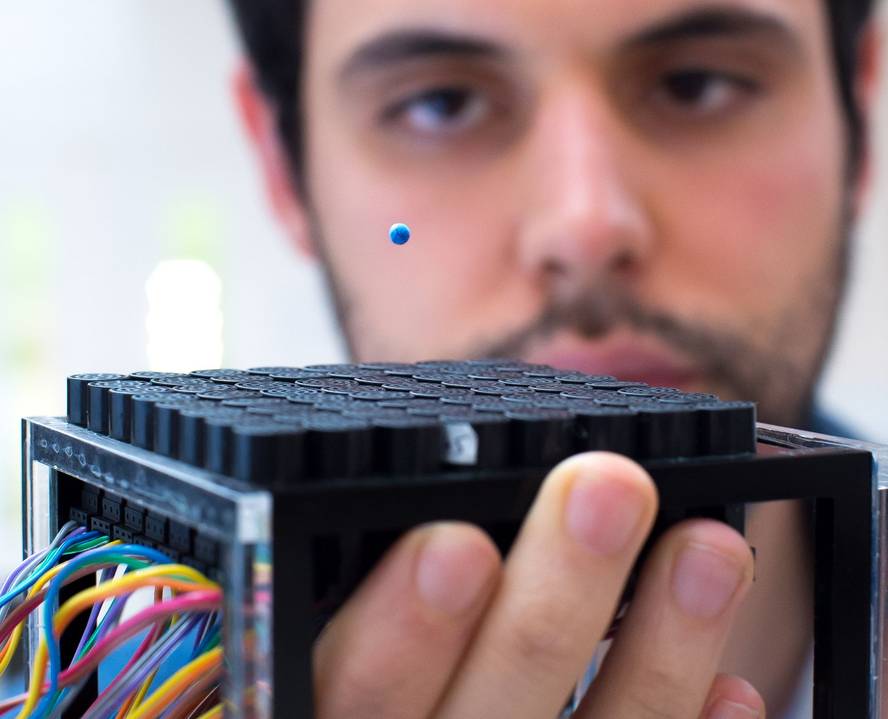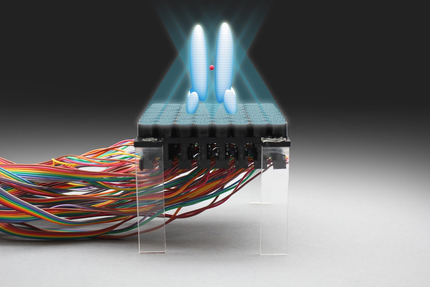Ultrasonic Small Object Levitation Technology

Objects of less than a millimetre size can be subjected to ultrasonic lebitation, as well as upward and downward movement, side by side and back, according to a work published by the journal Nature Communications. Without touching and at a distance.
His main researcher is Asier Marzo, who is doing a doctoral thesis at the Public University of Navarra. The computer engineer Marzo and his colleagues from the Universities of Bristol and Sussex have managed to levitate and move particles with great precision. To do this they have created a device that emits synchronized sound waves through several speakers.

They have built a ray of sonic traction that, through high-intensity sound waves, generates acoustic holograms, that is, three-dimensional acoustic zones. These holograms have been given different shapes, such as tweezers, tornados or bottles, and for the first time they have managed to trap and move the particles.
Researchers welcomed their achievement, as it has been an opportunity that has long fascinated science and engineering communities. This idea was already mentioned in the films Star Wars and Star Trek, which lately are so much listening.
So far, acoustic levitation has only been achieved by loudspeakers surrounding objects on all sides, limiting the expansion of movement. On this occasion, the main novelty of this research is the unilateral emission of ultrasound, which can open new avenues of research and applications.
Researchers observe interesting technological and medical applications for the future, such as the creation of industrial production chains for the transport and assembly of delicate objects that do not require physical contact. On the other hand, these ultrasounds can be used in both air and water and biological tissues, so they can handle particles in the human body and transport specific drugs with great precision.





